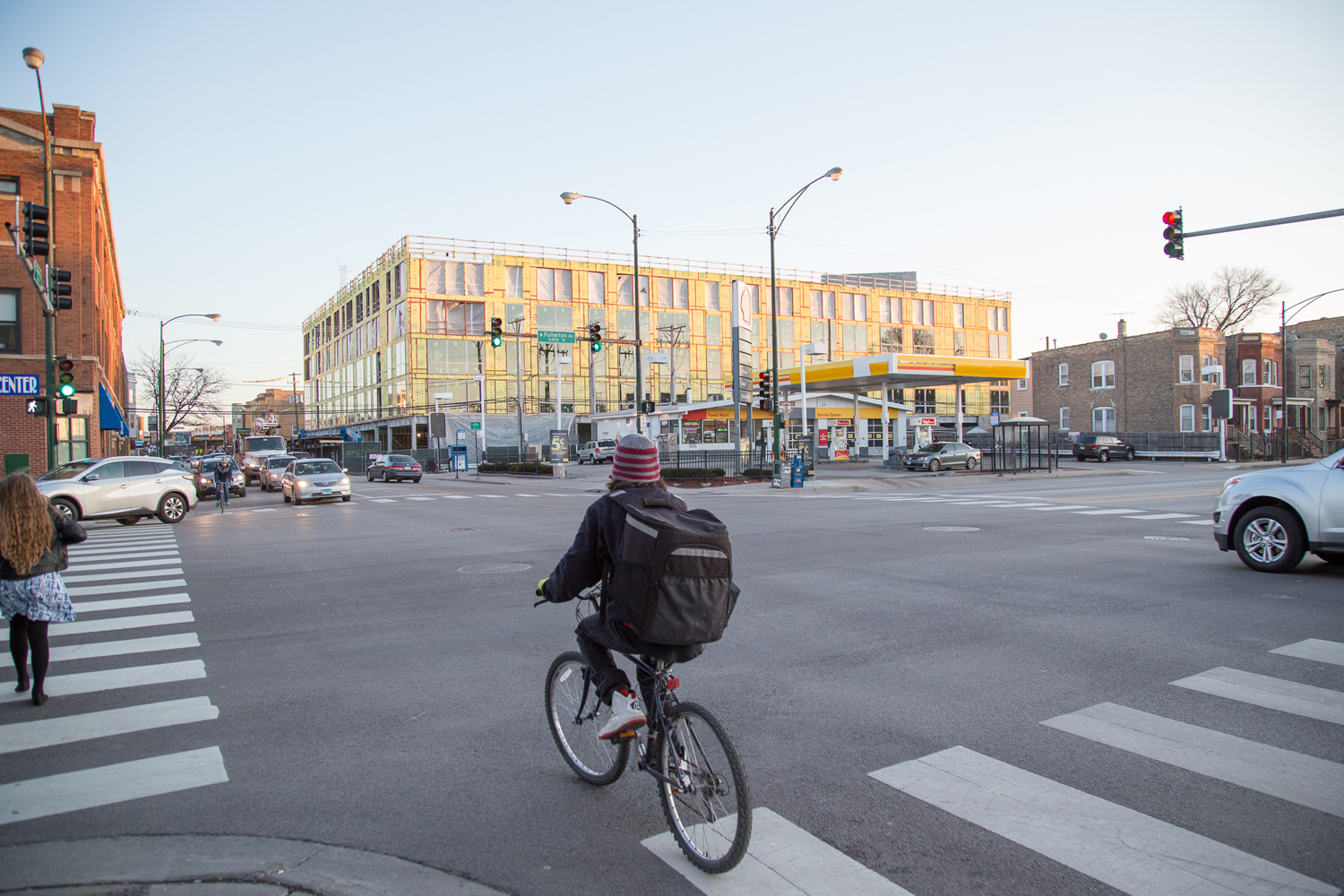In 1976, my mom graduated from journalism school and moved to Old Town. At the time, it was a popular area for young professionals: affordable, close to downtown and the lake, full of great bars, restaurants, and theaters.
Recently, I asked where she and her friends would go when they were feeling adventurous—somewhere outside their normal stomping grounds, a little edgy, a little cool. With a laugh, she told me: Lincoln Park. Specifically, Halsted Street between Webster and Armitage—you know, that stretch currently home to Lululemon, Pure Barre, Bonobos, Warby Parker, and Jeni’s Ice Creams.
Suffice it to say, the word "edgy" does not come to mind when I think of present-day Lincoln Park. But in the 1970s, the neighborhood was exactly that. Halsted was home to an flurry of exciting nightlife, including the iconic gay/punk hang La Mere Vipere.
That burgeoning alternative scene lived alongside a robust working-class Latino community, who settled in Lincoln Park after immigrating from Puerto Rico in the '50s and '60s. Through the '80s, urbanities moved in for cheap rent. Eventually, young families bought houses, forcing area residents west into Logan Square and Humboldt Park.
Decades later, we're all too familiar with the cycle—and it's repeating itself in the very neighborhoods those immigrants moved west to in the first place. Logan Square has undergone the process at warp-speed. Just ten years ago, the neighborhood was on the rise, a well-kept secret among Chicago's hipsterati; Cole’s, Reno, and Fat Rice hadn’t even opened yet.
But by 2010, the area surrounding the Blue Line had become quintessentially of the moment. Local and national news outlets penned both odes to its exciting hipster scene and condemnations of gentrification. Logan's transformation was perenially discussed as in-progress: Logan is changing rapidly; Logan is gentrifying.
Less than a decade later, Logan is a boho paradise no more. Not only are its longtime residents gone, those first-wave gentrifiers have also been chased out by rising rents. In their absence, the area has transformed into the type of yuppie haven it served as a reprieve from. (The incoming Target on the lot of the former Discount Mega Mall is as symbolic a death knell as any.) The neighborhood is no longer changing; it's changed.
That change, of course, has almost everything to do with rent. In February, the grocer Half Italian closed its storefront on Milwaukee after rent there tripled. Taco spot L’Patron moved its Diversey shop across town when their payment doubled. Jam moved into Yusho’s old spot after a landlord dispute; Quenchers saloon went up for sale in November; Logan Hardware closed in April, citing the neighborhood’s changes; and symbolically, Longman & Eagle lost its Michelin star, quashing the era of excitement that its opening ushered in. Last year, Logan had the most buildings demolished of any Chicago neighborhood, with 109 teardown permits issued—up from 38 in 2012.
Rent hikes impact residents as much as they do businesses. In 2015, Logan Square and Avondale saw the most dramatic rent increases for two-bedroom apartments of any neighborhoods in the city (9.9% and 11% respectively, according to Domu data). According to rental site Zumper, it now costs more per month to rent a one-bedroom in Logan Square than it does in Lakeview, Andersonville, and North Center.
For many, Logan serves as a case study in the damage gentrification can wreak on a neighborhood. According to U.S. Census data, more than 19,200 Hispanic people left Logan Square between 2000 and 2014, moving west to Hermosa and Belmont-Cragin. The area’s Latino-owned businesses have followed, too. Just last month, Panaderia La Central, a 35-year-old Mexican bakery beneath the California Blue Line stop, closed due to waning business.
Since taking office in 2015, 35th Ward Alderman Carlos Ramirez-Rosa has made it his mission to keep “developer greed” out of his ward. In the 2017 documentary short Gentrified: Losing Logan Square, Ramirez-Rosa reiterates his 2015 chief campaign promise: “no zoning changes… without the community having real input.”
He’s had some success in that department: Last year, he downzoned two lots on Milwaukee Avenue, restricting the height, density, and types of buildings that could go in, largely to keep developers from building condos. But the neighborhood’s wave of popularity—and subsequent rise in cost—is too far along to stop it dead.
What’s happening in Logan Square sucks. And in all likelihood, the cycle of hipsterization spurring gentrification spurring yuppization will repeat in another neighborhood. Pilsen and Humboldt Park are already experiencing it. In a few years, it could be Hermosa, or Garfield Park, or North Lawndale. The question now is how to keep it from causing the damage it did in Logan Square—and whether it’s even possible for low-earning young people to thrive in a neighborhood without displacing working families.
A few free ideas: Live consciously in your neighborhoods. Seek to assimilate to its culture. Learn the area’s history. Send your kids to local schools—attendance keeps funding up. Resist the privatization of libraries and parks. Demand affordable housing like Ramirez-Rosa and state rep Will Guzzardi have. And most simply, actually engage with your neighbors. Places like Logan Square aren’t just reservoirs of cheap real estate; they’re existing communities that buyers can choose to join. Gentrification may not be fully preventable—but there’s a way to keep it from leaving the predictable trail of destruction.



